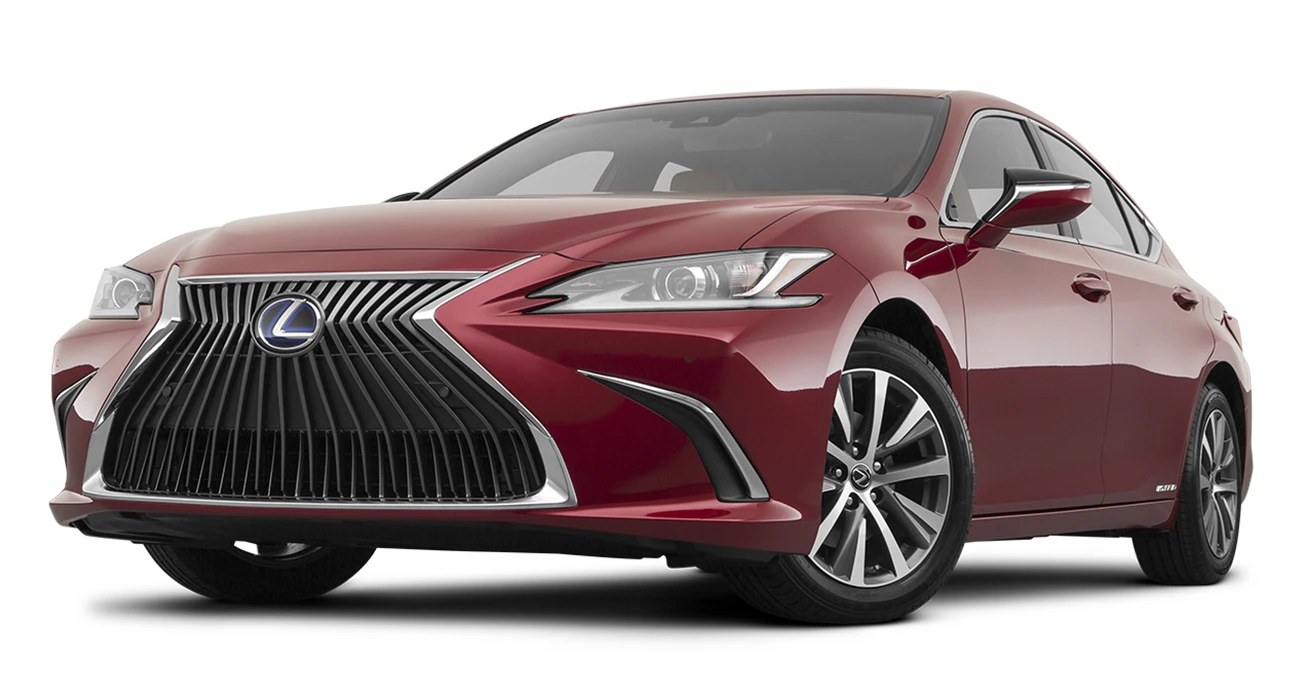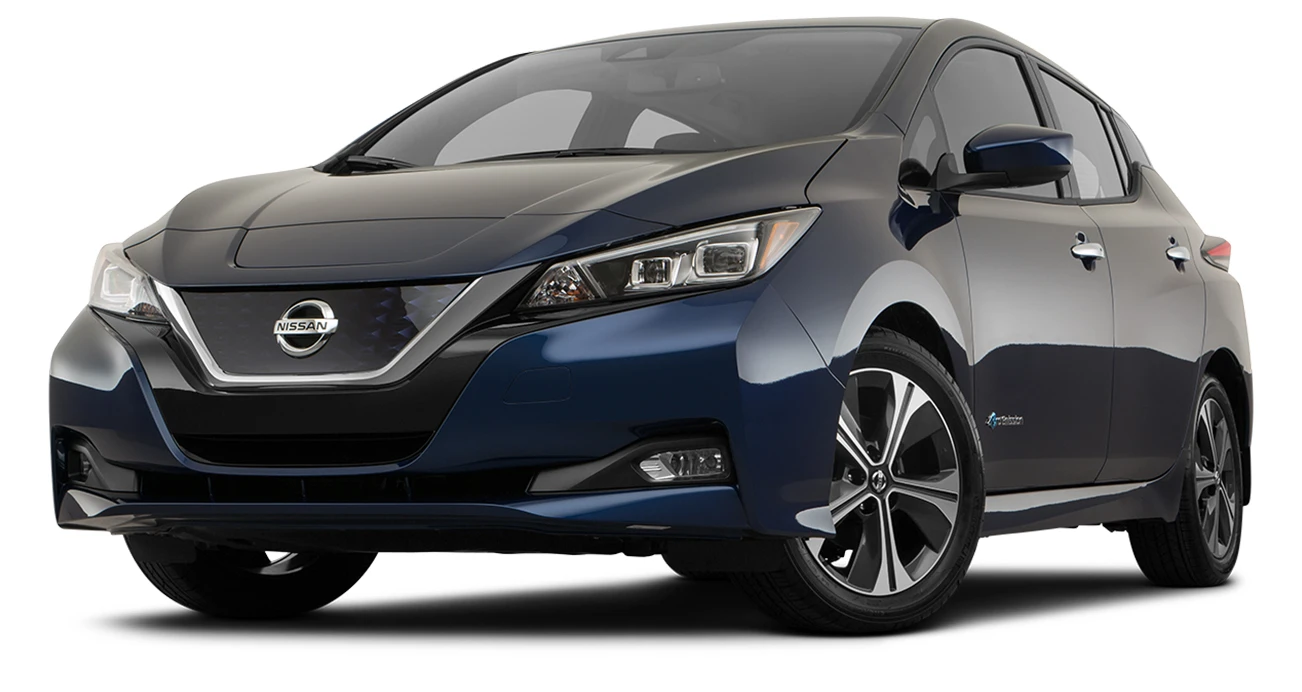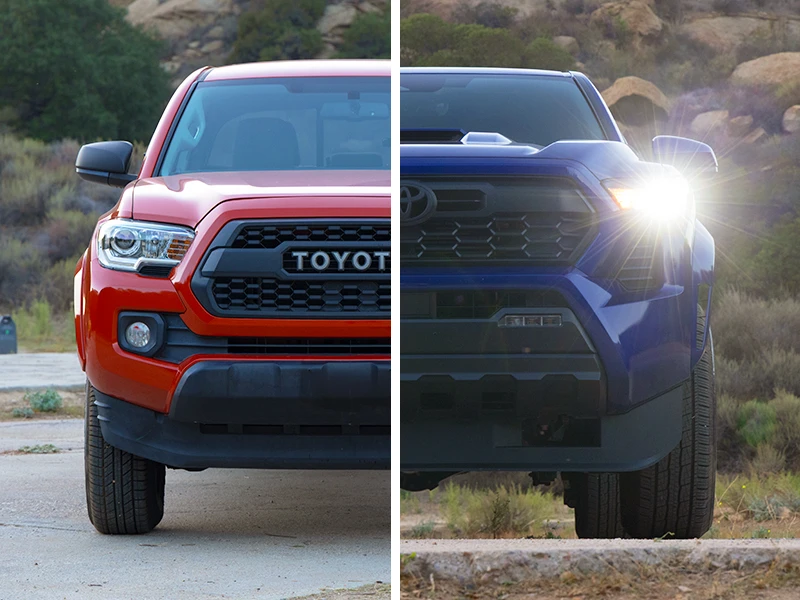
How they work and the pros and cons
With thousands of vehicles in our inventory, we’re here to help make car research easier for you. We’ve partnered with car-review experts from Edmunds to weigh in on what matters most when you’re looking to buy a truck or car.
***
Sales of electric vehicles have increased dramatically over the past few years, but the rise in popularity of cars with electric motors doesn't just include battery electric vehicles (BEVs) like the Tesla Model 3 or Hyundai Ioniq 5. It also includes hybrids like the Toyota Prius, plug-in hybrids (PHEVs) like the Kia Niro, and hydrogen-powered vehicles like the Toyota Mirai. We're going to look at each type of vehicle to better understand what these cars have in common and what sets them apart.
What is a hybrid car?

A hybrid car has a gas-powered engine, but it doesn't solely rely on that gas engine to get going. Hybrids have electric motors that are powered by batteries. Those motors can drive the car by themselves at low speeds for a short period of time, or run in conjunction with the gas engine to create extra power. When you press the brake, the electric motors also work as generators, slowing the car and generating electricity that gets stored in the battery. Some hybrids also use the gasoline engine to help recharge the battery. Examples of a hybrid include the Lexus ES 300h and Kia Sportage Hybrid.
What is a plug-in hybrid car?

A plug-in hybrid electric vehicle, or PHEV, also uses a gas-powered engine alongside an electric motor and a battery pack. However, here's where a PHEV stands out: Its battery is large enough to allow the vehicle to do some driving in all-electric mode as long as it has enough charge in the battery. Some PHEVs, like the Toyota RAV4 Prime, can go more than 40 miles on a single charge. The good news is if you forgot to plug in your PHEV, no problem—it simply acts like a regular hybrid when its battery is drained.
What is a hydrogen fuel cell vehicle?

These vehicles don't need gasoline and you don't have to plug them in. It's still an electric car, but instead of using a battery to store the energy, it uses hydrogen. Fuel cell vehicles can be filled up with hydrogen quite quickly, about as quickly as a gasoline-powered car. The fuel cell then strips electrons from the hydrogen to power an electric motor. However, they aren’t widely available, with current hydrogen fuel cell cars like the Toyota Mirai, Hyundai Nexo, and the Honda Clarity sold only in California at this time.
What is an electric vehicle?

An electric vehicle, sometimes referred to as a battery electric vehicle, BEV, or simply an EV, uses no gasoline at all. Instead it relies on a battery and an electric motor for its power. Early mainstream EVs like the Nissan Leaf had a maximum range of less than 100 miles, but these days, more modern electric cars and SUVs routinely top 250 miles of range. Some, like the Mercedes-Benz EQS and BMW iX, offer range exceeding 350 miles, and the Lucid Air can even be configured to provide more than more than 500 miles of EPA-estimated range.
If you're curious how to get the most range out of an electric vehicle, take a look at this article.
What's the difference between a hybrid and a plug-in hybrid?
The major difference between a hybrid and a plug-in hybrid is that by regularly charging a PHEV, you’ll be getting the most bang for your buck. Both vehicles can be driven just by putting gasoline in the tank. However, if you regularly charge your PHEV, you can reduce your fuel costs considerably by driving in EV mode. That's an important cost savings because most plug-in hybrids cost more than their equivalent hybrid counterparts.
Pros and cons of hybrids and plug-in hybrids
Pro: Great fuel economy and no hassle
Hybrids and plug-in hybrid electric vehicles (PHEVs) boast great gas mileage without the change in lifestyle that comes with switching to a fully electric vehicle. Hybrids like the Toyota Prius can get as much as 57 miles per gallon, while PHEVs like the Kia Niro Plug in can get more than 50 mpg and go more than 30 miles in all-electric mode.
Pro: PHEVs have enough electric-only range for average commutes
The average commute is around 20 miles one-way, and newer PHEVs offer enough electric-only range to cover that commute without burning gasoline. If charging at work is an option, or if you have a short commute, you might be able to handle most of your regular driving without your gas engine kicking on at all.
Pro: No range anxiety with a hybrid or PHEV
Whether you're driving a hybrid like the Honda Insight, or a PHEV like the Kia Niro Plug in, you won't have to worry about running your battery to empty. You still need to put gas in the car, since Mr. Fusion only exists in movies. But if you're not ready to make the jump to a fully electric vehicle, a hybrid can be a great way to dip your toe in the water.
Con: It's still an internal combustion engine
If you're hoping to reduce emissions, you can do worse than buying a hybrid. But whether it's a PHEV or a hybrid, you're still driving a car that burns gasoline. That makes a hybrid a bit of a compromise for those hoping to make an impact on the environment.
Con: Internal combustion maintenance
Because you still have a gas-burning engine under the hood, you'll have to keep up with all the regular maintenance that goes along with it. That means keeping up with regular oil changes, replacement of timing and accessory belts, and all the other maintenance that comes with a gasoline engine, on top of any maintenance to the electric components.
Pros and cons of hydrogen fuel cell vehicles
Pro: Benefits of EVs with no range anxiety
Modern fuel cell vehicles like the Toyota Mirai and Hyundai Nexo boast a range that exceeds 400 miles while offering the great ride you get in an electric vehicle. These vehicles can do that without needing hours to charge. In fact, filling a hydrogen tank takes about the same amount of time as filling up a regular gasoline-powered car. Fuel cell vehicles may sound exotic, but driving one is very straightforward.
Con: Finding a hydrogen fueling station
The bad news is you can find yourself a bit landlocked while owning a fuel cell vehicle. There aren't very many fueling stations, and there can be long waits to access the stations that do exist. At this time, these vehicles are only sold in California, which means you won't be taking your Clarity on a cross-country road trip anytime soon.
What's the difference between a plug-in hybrid and a battery electric vehicle?
Put simply: A battery electric vehicle doesn't rely on gasoline at all. There's nowhere for you to put liquid dinosaur bones in a Mazda MX-30 EV. While you can drive a plug-in hybrid like an electric vehicle, it can also be driven on gasoline, like a regular hybrid.
What's the difference between a hydrogen fuel cell vehicle and a battery electric vehicle?
Both vehicles are driven by an electric motor, but they rely on different ways of storing the energy to power that motor. A fuel cell car relies on hydrogen to generate electricity for its electric motor, while an EV stores electricity in a large battery to power its electric motor.
Pros and cons of battery electric vehicles
Pro: Electric vehicles are environmentally friendly
Tailpipe emissions from gas-powered vehicles are not great for the environment. That's not a problem for electric vehicles like the Ford Mustang Mach-E or Tesla Model Y, which have zero tailpipe emissions. If you're looking for ways to shrink your carbon footprint, you can do worse than buying an electric vehicle.
Pro: Better air quality
Switching to an electric car can improve air quality, at times dramatically. That has been especially true in areas like Los Angeles, where a quick adoption of electric vehicles has been linked to a drop in asthma cases.
Pro: Electric cars can be cheaper to fuel
Looking for a less expensive way to pay for your commute? If you're able to charge your vehicle at home, it will generally be cheaper to fill your EV with electrons than it is to pump gas into your current ride. A lot of factors impact the cost of charging an EV, but switching often comes with cost savings.
Pro: Electric cars come with less maintenance
There will still be some maintenance on your EV, but you can say goodbye to changing timing belts and motor oil. Some larger maintenance jobs, like changing brake pads, should come less frequently thanks to the regenerative braking that comes standard on modern electric vehicles.
Pro: EVs are fun to drive
The instant torque that electric vehicles provide makes for a thrilling driving experience. While sporty EVs like the Porsche Taycan speak for themselves, you don't need to get a sports car to have a blast behind the wheel of an EV. Vehicles like the Tesla Model S are both efficient and quick, with some models going from 0 to 60 miles per hour in just over 2 seconds.
Pro: Electric vehicle tax credits
Many vehicles are now eligible for EV tax credits, including used cars. Some of the fine print can be confusing, but these credits can net you as much as $7,500 off the purchase price of a new vehicle. For used vehicles, $4,000 is the maximum credit currently available.
Pro: HOV lane accessibility
In some states, buying an electric vehicle gives you access to the HOV, or carpool, lane. That can be a great perk, especially if you live somewhere with a lot of traffic. Used electric vehicles can be eligible for an HOV sticker depending on their registration history. These requirements vary from state to state.
Pro: Peace and quiet
There's nothing like the roar of V8 in a Chevrolet Corvette, or a diesel engine in a full-size pickup truck. But there's also something captivating about driving a vehicle, regardless of its size, that makes virtually no noise at all. The silent glide of an electric vehicle can be eerie at first, but it can also be relaxing after a long workday.
Con: Range anxiety
Most electric vehicles sold in 2022 have a range of more than 200 miles, which will suit most shoppers in normal conditions. But that's not why we've come to rely on cars. We want a vehicle that can handle abnormal conditions. What if you want to go on a long drive? Or if you forget to charge? Or what if one of those oh-so-popular post-apocalyptic shows comes true while your EV is low on charge? If you still had a gassed-up Honda Civic in the garage, we wouldn't be stressing about this!
Con: Charging infrastructure is disappointing
If you can't charge at home or if you otherwise have to rely on public charging stations, you'll soon find yourself disappointed in the current United States' charging infrastructure. From a lack of charging stations to a lack of working charging stations to the prohibitive cost of charging while using one of the few working charging stations … you get the idea. While the U.S. government has publicly committed to improving this infrastructure, it could be years before it's up on its feet.
Con: Not many affordable electric cars
Manufacturers have leaned on luxury SUVs like the BMW iX, Mercedes-Benz EQB and Rivian R1S, making it tough to find an economical alternative. While less expensive options like the Nissan Leaf and Chevrolet Bolt EUV exist, the limited options at the lower end of the price spectrum can make it challenging to find inventory. They're also relatively bare-bones in terms of range and features.
Con: Long charging time
To state the obvious: It takes longer to put electrons into a Hyundai Ioniq 5 than it does to put gas into a Dodge Grand Caravan. While charging at home takes some of the pain out of that process, it still doesn't replicate the gas station experience that we've become so accustomed to. Unfortunately, the long charging time is baked into the bread of EV ownership. Charge time depends on both the EV you own and the type of charger you're using. While fast chargers are available, relying on them leads to quicker battery degradation.
Con: Battery degradation
Speaking of which, the battery inside your electric vehicle won’t last forever. Much like the battery inside your smartphone, the more you charge it, the more it degrades. There are ways to preserve the life of your battery, such as relying on Level 2 charging. But if you keep your EV long enough, you will need to replace its battery. If it is beyond the life of its warranty, that replacement will be in the thousands of dollars.
Con: You're still relying on fossil fuels (sometimes)
While electric vehicles don't emit any tailpipe emissions, they're not exactly emission-free. That's because the electricity is often generated or extracted using power plants that rely on a fossil-fuel intensive grid. The same can be true for hydrogen, much of which is made at the same refineries that make gasoline and other fossil fuels.
That isn't always the case, mind you. If your electric grid relies primarily on renewable energy, for instance, you're doing a big favor for the planet. And if you're charging at home with some solar panels on the roof, you're ahead of the game. In any case, don't think of an EV as a get-out-of-climate-change free card. It's just a step in the right direction.
Conclusion
There are a lot of ways to put a little, or a lot, of electricity into your daily commute. A standard hybrid can greatly improve your fuel economy, while an electric vehicle can save you money and do a favor for the planet. Your personal finances and individual situation will dictate which works best for you, but there's no doubt you have a lot of options.




